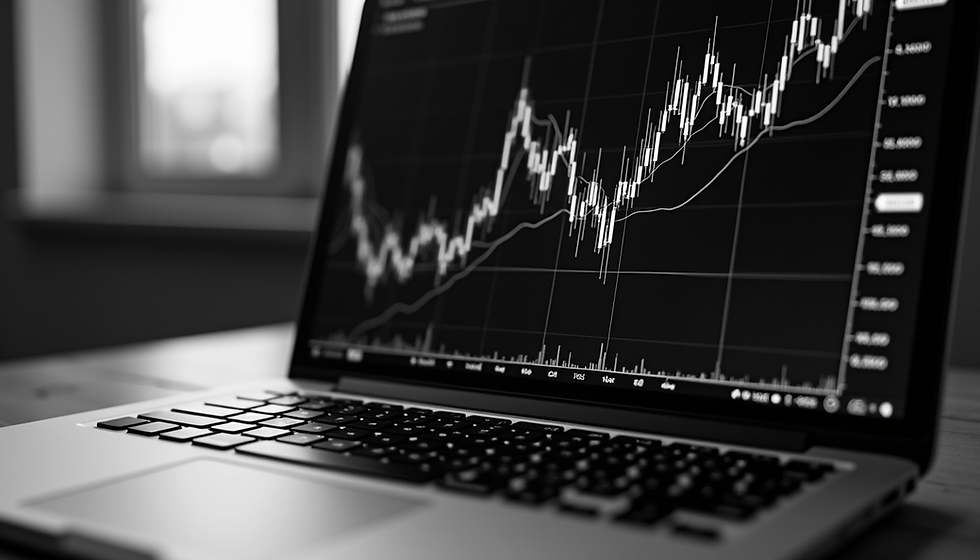Essential Trading Books Collection for Every Trader
- Jeff Sonnier

- Oct 24
- 4 min read
Updated: Nov 16
If you’re diving into the world of trading, you’ve probably realised it’s a bit like learning a new language. Charts, trends, strategies - it can all feel overwhelming. But here’s the good news: you don’t have to figure it all out on your own. There’s a treasure trove of knowledge waiting for you in some fantastic trading books. These aren’t just dusty manuals; they’re your guides, your mentors, your secret weapons. Ready to build your confidence and sharpen your skills? Let’s explore the essential trading books that every trader should have on their shelf.
Why These Essential Trading Books Matter
Trading isn’t just about luck or guesswork. It’s a skill, and like any skill, it needs practice, patience, and the right resources. That’s where essential trading books come in. They break down complex ideas into bite-sized, understandable chunks. They share real-world examples, strategies that work, and mistakes to avoid.
Think of these books as your personal trading coach. They help you develop a repeatable approach, so you’re not just hoping for the best but making informed decisions every step of the way. Whether you’re a beginner or somewhere in the middle of your trading journey, these books will give you clarity and confidence.

Top Essential Trading Books You Should Read
Let’s get to the good stuff. Here’s a list of some of the best trading books that have stood the test of time. Each one offers something unique, whether it’s mastering technical analysis, understanding market psychology, or developing a solid trading plan.
"Trading for a Living" by Dr Alexander Elder
This book is a classic. It covers everything from psychology to tactics and risk management. Dr Elder’s approach is practical and easy to follow, making it perfect for beginners and intermediate traders alike.
"Market Wizards" by Jack D. Schwager
Want to peek inside the minds of some of the most successful traders? This book is a collection of interviews that reveal their strategies, mistakes, and lessons learned. It’s inspiring and full of real-world wisdom.
"Technical Analysis of the Financial Markets" by John J. Murphy
If charts and patterns are your thing, this book is a must-have. It’s often called the bible of technical analysis and explains everything from basic concepts to advanced techniques.
"The Disciplined Trader" by Mark Douglas
Trading is as much about mindset as it is about strategy. This book dives deep into the psychology of trading, helping you understand and control your emotions.
"A Beginner’s Guide to Forex Trading" by Matthew Driver
For those interested in currency markets, this book offers a straightforward introduction to forex trading, covering the essentials without overwhelming you.
These books form a solid foundation. They’re not just theory - they’re packed with actionable advice you can start applying right away.

What is the 3 5 7 Rule in Trading?
You might have heard about the 3 5 7 rule in trading, but what exactly is it? It’s a simple guideline to help you manage your trades and expectations.
3: The number of times you should test a support or resistance level before it’s considered strong.
5: The ideal number of trades you should review to learn from your successes and mistakes.
7: The maximum number of indicators you should use on a chart to avoid confusion.
Why does this matter? Because trading can get complicated fast. The 3 5 7 rule keeps things simple and focused. It encourages you to respect key price levels, learn continuously, and avoid information overload. Stick to this rule, and you’ll find your trading approach becoming clearer and more effective.
How to Use Your Trading Books Collection Effectively
Owning a great set of books is one thing, but using them well is another. Here’s how to get the most out of your trading books collection:
Set a reading schedule: Don’t try to read everything at once. Pick one book and dedicate 20-30 minutes a day to it.
Take notes: Jot down key points, questions, and ideas. This helps reinforce learning and makes it easier to review later.
Apply what you learn: Trading is practical. Try out strategies or concepts in a demo account before risking real money.
Join discussions: Find forums or groups where you can talk about what you’re reading. Sharing insights helps deepen understanding.
Review regularly: Trading evolves, and so should your knowledge. Revisit your books every few months to refresh your skills.
Remember, these books are tools to build your confidence and create a repeatable trading approach. Use them actively, and you’ll see the difference.

Building Your Trading Confidence One Page at a Time
Trading can feel like a rollercoaster. One day you’re up, the next you’re down. But with the right education, you can smooth out those bumps. These essential trading books are your steady companions on that journey. They help you understand the markets, manage your emotions, and develop strategies that work for you.
Don’t rush. Take your time to absorb the lessons. Remember, every expert trader started where you are now - curious, eager, and maybe a little overwhelmed. With the right books and a bit of patience, you’ll build the skills and confidence to trade smarter, not harder.
So, grab your favourite book from your trading books collection, brew a cup of tea, and start turning those pages. Your trading journey just got a whole lot clearer.
Happy trading!



Comments